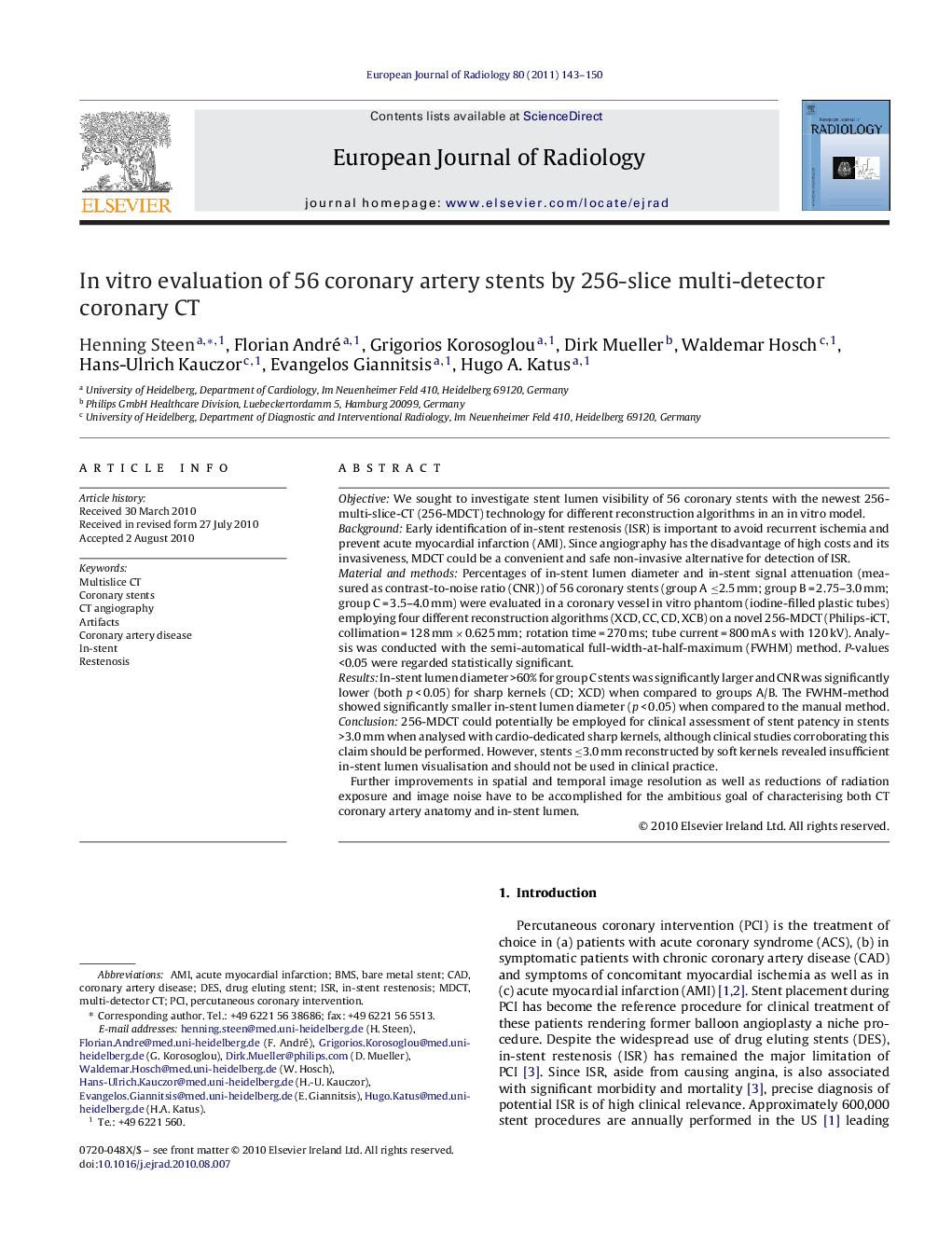| کد مقاله | کد نشریه | سال انتشار | مقاله انگلیسی | نسخه تمام متن |
|---|---|---|---|---|
| 4226523 | 1609798 | 2011 | 8 صفحه PDF | دانلود رایگان |

ObjectiveWe sought to investigate stent lumen visibility of 56 coronary stents with the newest 256-multi-slice-CT (256-MDCT) technology for different reconstruction algorithms in an in vitro model.BackgroundEarly identification of in-stent restenosis (ISR) is important to avoid recurrent ischemia and prevent acute myocardial infarction (AMI). Since angiography has the disadvantage of high costs and its invasiveness, MDCT could be a convenient and safe non-invasive alternative for detection of ISR.Material and methodsPercentages of in-stent lumen diameter and in-stent signal attenuation (measured as contrast-to-noise ratio (CNR)) of 56 coronary stents (group A ≤2.5 mm; group B = 2.75–3.0 mm; group C = 3.5–4.0 mm) were evaluated in a coronary vessel in vitro phantom (iodine-filled plastic tubes) employing four different reconstruction algorithms (XCD, CC, CD, XCB) on a novel 256-MDCT (Philips-iCT, collimation = 128 mm × 0.625 mm; rotation time = 270 ms; tube current = 800 mA s with 120 kV). Analysis was conducted with the semi-automatical full-width-at-half-maximum (FWHM) method. P-values <0.05 were regarded statistically significant.ResultsIn-stent lumen diameter >60% for group C stents was significantly larger and CNR was significantly lower (both p < 0.05) for sharp kernels (CD; XCD) when compared to groups A/B. The FWHM-method showed significantly smaller in-stent lumen diameter (p < 0.05) when compared to the manual method.Conclusion256-MDCT could potentially be employed for clinical assessment of stent patency in stents >3.0 mm when analysed with cardio-dedicated sharp kernels, although clinical studies corroborating this claim should be performed. However, stents ≤3.0 mm reconstructed by soft kernels revealed insufficient in-stent lumen visualisation and should not be used in clinical practice.Further improvements in spatial and temporal image resolution as well as reductions of radiation exposure and image noise have to be accomplished for the ambitious goal of characterising both CT coronary artery anatomy and in-stent lumen.
Journal: European Journal of Radiology - Volume 80, Issue 1, October 2011, Pages 143–150